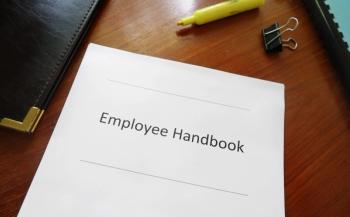
How practices are tackling pandemic staffing
From furloughing employees to implementing strict safety protocols, here's how practices have tackled pandemic staffing.
As states lift restrictions and practices ease toward a return to full services, maintaining adequate staffing alongside strict safety measures has been challenging. Here's how some practices are doing it.
A new reality
As many as 97 percent of practices have felt a negative financial impact due to COVID-19, according to a
"The week of March 16, 2020, will be etched in everyone's memory," says
Those with existing telehealth capabilities had the advantage of pivoting more quickly, retaining staff, a source of revenue and continuity of care in the process. "I was fortunate to have lean staffing pre-COVID-19 and did not have to lay off anyone, though I know this was not the case for many of my colleagues," says
Staff used questionnaires and widespread serology and PCR testing to screen patients prior to elective procedures. Employees underwent the same screening process. "With this strategy, there were no new infections amongst the patients or the healthcare team members," says Natale. "Seronegative physicians and staff interacted freely in the workplace without using significantly restrictive, expensive, non-conventional protective gears and difficult to implement social distancing rules."
Preparing for reopening
As practices resume services, it is critical that everyone is aware of new guidelines and protocols, especially staff that may have been furloughed. "Physicians will need to rely on their teams to disinfect, monitor and track activities in addition to assisting in the provision of clinical services," says Matuszewski, who developed a
The sooner this happens, the better, since a backlog of patients awaits. "What many are seeing now is what we predicted: that during the easing of restrictions, we are operating over capacity while still trying to be responsible about spacing out patients," says Rosenthal. "We rebounded to about 125-150 percent of volume post-shutdown as the bubble of patients who couldn't be seen during that time came back into the system."
But legislation has hampered some practices' efforts to recall furloughed employees. The
Looking ahead
Now weeks into state quarantine lifts, practices are finding their new normal. "The healthcare industry is shifting to the concept of just-in-time delivery versus having patients waiting on us," says Rosenthal. Telehealth services have become part of daily practice, open office spaces have been reconfigured to minimize prolonged exposure and staff are increasingly instrumental in screening both themselves and patients.
The lessons learned over the past several months highlight the necessity of having plans in place to prevent future disruptions in care and shore up staff and patient safety. "Physicians and their teams will need to move beyond clinical expertise to hone in on some basic business skills, such as a developing a business continuity plan," says Matuszewski. "It's not taught in medical school."
About the Author
Newsletter
Optimize your practice with the Physicians Practice newsletter, offering management pearls, leadership tips, and business strategies tailored for practice administrators and physicians of any specialty.














